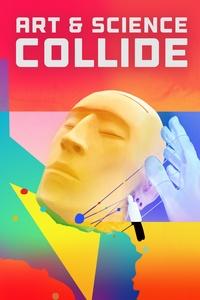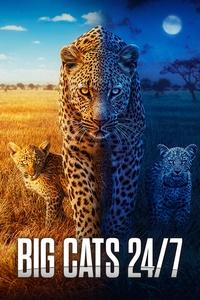Nova
PBS' premier science series helps viewers of all ages explore the science behind the headlines. Along the way, NOVA programs demystify science and technology and highlight the people involved in scientific pursuits.
| Fri, Dec 19 | 3:00 P.M. |
Polar Extremes
NHPBS (11.1)
Following a trail of fossils found in all the wrong places -- beech trees in Antarctica, redwoods and hippo-like mammals in the Arctic -- uncover the bizarre history of the poles, from miles-thick ice sheets to warm polar forests teeming with life. |
| Sat, Dec 20 | 11:00 A.M. |
The Planets: Mars
NH Explore (11.2)
Mars was once a blue water world studded with active volcanoes. |
| Sat, Dec 20 | 1:00 P.M. |
Polar Extremes
NH Explore (11.2)
Following a trail of fossils found in all the wrong places -- beech trees in Antarctica, redwoods and hippo-like mammals in the Arctic -- uncover the bizarre history of the poles, from miles-thick ice sheets to warm polar forests teeming with life. |
| Sun, Dec 21 | 1:00 A.M. |
Polar Extremes
NHPBS (11.1)
Following a trail of fossils found in all the wrong places -- beech trees in Antarctica, redwoods and hippo-like mammals in the Arctic -- uncover the bizarre history of the poles, from miles-thick ice sheets to warm polar forests teeming with life. |
| Sun, Dec 21 | 4:00 A.M. |
Polar Extremes
NH Explore (11.2)
Following a trail of fossils found in all the wrong places -- beech trees in Antarctica, redwoods and hippo-like mammals in the Arctic -- uncover the bizarre history of the poles, from miles-thick ice sheets to warm polar forests teeming with life. |
| Sun, Dec 21 | 7:00 A.M. |
London Super Tunnel
NHPBS (11.1)
Thousands of engineers, technicians and workers race to build Europe's biggest construction project-London's new railroad, the Elizabeth Line. |
| Sun, Dec 21 | 8:00 P.M. |
Polar Extremes
NH Explore (11.2)
Following a trail of fossils found in all the wrong places -- beech trees in Antarctica, redwoods and hippo-like mammals in the Arctic -- uncover the bizarre history of the poles, from miles-thick ice sheets to warm polar forests teeming with life. |
| Sun, Dec 21 | 10:00 P.M. |
The Planets: Mars
NH Explore (11.2)
Mars was once a blue water world studded with active volcanoes. |
| Mon, Dec 22 | 12:00 A.M. |
Polar Extremes
NH Explore (11.2)
Following a trail of fossils found in all the wrong places -- beech trees in Antarctica, redwoods and hippo-like mammals in the Arctic -- uncover the bizarre history of the poles, from miles-thick ice sheets to warm polar forests teeming with life. |
| Mon, Dec 22 | 2:00 A.M. |
The Planets: Mars
NH Explore (11.2)
Mars was once a blue water world studded with active volcanoes. |
| Tue, Dec 23 | 7:00 P.M. |
Polar Extremes
NH World (11.3)
Following a trail of fossils found in all the wrong places -- beech trees in Antarctica, redwoods and hippo-like mammals in the Arctic -- uncover the bizarre history of the poles, from miles-thick ice sheets to warm polar forests teeming with life. |
| Wed, Dec 24 | 12:00 A.M. |
Polar Extremes
NH World (11.3)
Following a trail of fossils found in all the wrong places -- beech trees in Antarctica, redwoods and hippo-like mammals in the Arctic -- uncover the bizarre history of the poles, from miles-thick ice sheets to warm polar forests teeming with life. |
| Wed, Dec 24 | 8:00 A.M. |
Polar Extremes
NH World (11.3)
Following a trail of fossils found in all the wrong places -- beech trees in Antarctica, redwoods and hippo-like mammals in the Arctic -- uncover the bizarre history of the poles, from miles-thick ice sheets to warm polar forests teeming with life. |
| Fri, Dec 26 | 3:00 P.M. |
Dog Tales
NHPBS (11.1)
Dogs have long been dependable companions by our sides. |
| Fri, Dec 26 | 4:00 P.M. |
Cat Tales
NHPBS (11.1)
Worshiped as a goddess, condemned as satanic and spun into a stunning array of breeds, cats have long fascinated humans. |
| Sat, Dec 27 | 11:00 A.M. |
The Planets: Jupiter
NH Explore (11.2)
Jupiter's massive gravitational force made it a wrecking ball when it barreled through the early solar system. |
| Sat, Dec 27 | 1:00 P.M. |
Dog Tales
NH Explore (11.2)
Dogs have long been dependable companions by our sides. |
| Sat, Dec 27 | 2:00 P.M. |
Cat Tales
NH Explore (11.2)
Worshiped as a goddess, condemned as satanic and spun into a stunning array of breeds, cats have long fascinated humans. |
| Sun, Dec 28 | 1:00 A.M. |
Dog Tales
NHPBS (11.1)
Dogs have long been dependable companions by our sides. |
| Sun, Dec 28 | 2:00 A.M. |
Cat Tales
NHPBS (11.1)
Worshiped as a goddess, condemned as satanic and spun into a stunning array of breeds, cats have long fascinated humans. |
| Sun, Dec 28 | 4:00 A.M. |
Dog Tales
NH Explore (11.2)
Dogs have long been dependable companions by our sides. |
| Sun, Dec 28 | 4:00 A.M. |
Polar Extremes
NH World (11.3)
Following a trail of fossils found in all the wrong places -- beech trees in Antarctica, redwoods and hippo-like mammals in the Arctic -- uncover the bizarre history of the poles, from miles-thick ice sheets to warm polar forests teeming with life. |
| Sun, Dec 28 | 5:00 A.M. |
Cat Tales
NH Explore (11.2)
Worshiped as a goddess, condemned as satanic and spun into a stunning array of breeds, cats have long fascinated humans. |
| Sun, Dec 28 | 7:00 A.M. |
Star Chasers of Senegal
NHPBS (11.1)
A visionary astronomer in West Africa attempts a high-stakes observation of a distant asteroid vital to a NASA mission. |
| Sun, Dec 28 | 8:00 P.M. |
Dog Tales
NH Explore (11.2)
Dogs have long been dependable companions by our sides. |
| Sun, Dec 28 | 9:00 P.M. |
Cat Tales
NH Explore (11.2)
Worshiped as a goddess, condemned as satanic and spun into a stunning array of breeds, cats have long fascinated humans. |
| Sun, Dec 28 | 10:00 P.M. |
The Planets: Jupiter
NH Explore (11.2)
Jupiter's massive gravitational force made it a wrecking ball when it barreled through the early solar system. |
| Mon, Dec 29 | 12:00 A.M. |
Dog Tales
NH Explore (11.2)
Dogs have long been dependable companions by our sides. |
| Mon, Dec 29 | 1:00 A.M. |
Cat Tales
NH Explore (11.2)
Worshiped as a goddess, condemned as satanic and spun into a stunning array of breeds, cats have long fascinated humans. |
| Mon, Dec 29 | 2:00 A.M. |
The Planets: Jupiter
NH Explore (11.2)
Jupiter's massive gravitational force made it a wrecking ball when it barreled through the early solar system. |
| Sat, Jan 3 | 11:00 A.M. |
The Planets: Saturn
NH Explore (11.2)
NASA's Cassini explores Saturn for 13 years, looping through its icy rings and flying by its moons. |
| Sat, Jan 3 | 1:00 P.M. |
Your Brain: Perception Deception
NH Explore (11.2)
Is what you see real? Join neuroscientist Heather Berlin on a quest to understand how your brain shapes your reality, and why you can't always trust what you perceive. |
| Sat, Jan 3 | 2:00 P.M. |
Your Brain: Who's In Control?
NH Explore (11.2)
Are you in control of your brain, or is your brain controlling you? Dive into the latest research on the subconscious with neuroscientist Heather Berlin to see what's really driving the decisions you make. |
| Sun, Jan 4 | 4:00 A.M. |
Your Brain: Perception Deception
NH Explore (11.2)
Is what you see real? Join neuroscientist Heather Berlin on a quest to understand how your brain shapes your reality, and why you can't always trust what you perceive. |
| Sun, Jan 4 | 5:00 A.M. |
Your Brain: Who's In Control?
NH Explore (11.2)
Are you in control of your brain, or is your brain controlling you? Dive into the latest research on the subconscious with neuroscientist Heather Berlin to see what's really driving the decisions you make. |
| Sun, Jan 4 | 7:00 A.M. |
New Eye on the Universe
NHPBS (11.1)
In July 2022, NASA's James Webb Space Telescope released its first images, looking further back in time than ever before to show our universe in stunningly beautiful detail. |
| Sun, Jan 4 | 8:00 P.M. |
Your Brain: Perception Deception
NH Explore (11.2)
Is what you see real? Join neuroscientist Heather Berlin on a quest to understand how your brain shapes your reality, and why you can't always trust what you perceive. |
| Sun, Jan 4 | 9:00 P.M. |
Your Brain: Who's In Control?
NH Explore (11.2)
Are you in control of your brain, or is your brain controlling you? Dive into the latest research on the subconscious with neuroscientist Heather Berlin to see what's really driving the decisions you make. |
| Sun, Jan 4 | 10:00 P.M. |
The Planets: Saturn
NH Explore (11.2)
NASA's Cassini explores Saturn for 13 years, looping through its icy rings and flying by its moons. |
| Mon, Jan 5 | 12:00 A.M. |
Your Brain: Perception Deception
NH Explore (11.2)
Is what you see real? Join neuroscientist Heather Berlin on a quest to understand how your brain shapes your reality, and why you can't always trust what you perceive. |
| Mon, Jan 5 | 1:00 A.M. |
Your Brain: Who's In Control?
NH Explore (11.2)
Are you in control of your brain, or is your brain controlling you? Dive into the latest research on the subconscious with neuroscientist Heather Berlin to see what's really driving the decisions you make. |
| Mon, Jan 5 | 2:00 A.M. |
The Planets: Ice Worlds
NH Explore (11.2)
In the far reaches of the solar system, Uranus and Neptune dazzle with unexpected rings, supersonic winds and dozens of moons. |
| Wed, Jan 7 | 9:00 P.M. |
Arctic Sinkholes
NHPBS (11.1)
Scientists investigate colossal explosions in Siberia and other evidence that rapidly melting soil in the Arctic is releasing vast amounts of methane, a potent greenhouse gas. |
| Thu, Jan 8 | 1:00 A.M. |
Arctic Sinkholes
NHPBS (11.1)
Scientists investigate colossal explosions in Siberia and other evidence that rapidly melting soil in the Arctic is releasing vast amounts of methane, a potent greenhouse gas. |
| Fri, Jan 9 | 3:00 P.M. |
Arctic Sinkholes
NHPBS (11.1)
Scientists investigate colossal explosions in Siberia and other evidence that rapidly melting soil in the Arctic is releasing vast amounts of methane, a potent greenhouse gas. |
| Sat, Jan 10 | 11:00 A.M. |
The Planets: Ice Worlds
NH Explore (11.2)
In the far reaches of the solar system, Uranus and Neptune dazzle with unexpected rings, supersonic winds and dozens of moons. |
| Sat, Jan 10 | 1:00 P.M. |
Arctic Sinkholes
NH Explore (11.2)
Scientists investigate colossal explosions in Siberia and other evidence that rapidly melting soil in the Arctic is releasing vast amounts of methane, a potent greenhouse gas. |
| Sun, Jan 11 | 12:00 A.M. |
Arctic Sinkholes
NHPBS (11.1)
Scientists investigate colossal explosions in Siberia and other evidence that rapidly melting soil in the Arctic is releasing vast amounts of methane, a potent greenhouse gas. |
| Sun, Jan 11 | 4:00 A.M. |
Arctic Sinkholes
NH Explore (11.2)
Scientists investigate colossal explosions in Siberia and other evidence that rapidly melting soil in the Arctic is releasing vast amounts of methane, a potent greenhouse gas. |
| Sun, Jan 11 | 7:00 A.M. |
Arctic Sinkholes
NHPBS (11.1)
Scientists investigate colossal explosions in Siberia and other evidence that rapidly melting soil in the Arctic is releasing vast amounts of methane, a potent greenhouse gas. |
| Sun, Jan 11 | 8:00 P.M. |
Arctic Sinkholes
NH Explore (11.2)
Scientists investigate colossal explosions in Siberia and other evidence that rapidly melting soil in the Arctic is releasing vast amounts of methane, a potent greenhouse gas. |
| Sun, Jan 11 | 10:00 P.M. |
The Planets: Ice Worlds
NH Explore (11.2)
In the far reaches of the solar system, Uranus and Neptune dazzle with unexpected rings, supersonic winds and dozens of moons. |
| Mon, Jan 12 | 12:00 A.M. |
Arctic Sinkholes
NH Explore (11.2)
Scientists investigate colossal explosions in Siberia and other evidence that rapidly melting soil in the Arctic is releasing vast amounts of methane, a potent greenhouse gas. |
| Mon, Jan 12 | 2:00 A.M. |
Rise of the Mammals
NH Explore (11.2)
Sixty-six million years ago, an asteroid wiped out the dinosaurs in a fiery global catastrophe. |
| Tue, Jan 13 | 7:00 P.M. |
Arctic Sinkholes
NH World (11.3)
Scientists investigate colossal explosions in Siberia and other evidence that rapidly melting soil in the Arctic is releasing vast amounts of methane, a potent greenhouse gas. |
| Wed, Jan 14 | 12:00 A.M. |
Arctic Sinkholes
NH World (11.3)
Scientists investigate colossal explosions in Siberia and other evidence that rapidly melting soil in the Arctic is releasing vast amounts of methane, a potent greenhouse gas. |
| Wed, Jan 14 | 8:00 A.M. |
Arctic Sinkholes
NH World (11.3)
Scientists investigate colossal explosions in Siberia and other evidence that rapidly melting soil in the Arctic is releasing vast amounts of methane, a potent greenhouse gas. |
| Wed, Jan 14 | 9:00 P.M. |
What Are UFOs?
NHPBS (11.1)
After decades in the shadows, UFOs are being studied seriously. |
| Thu, Jan 15 | 1:00 A.M. |
What Are UFOs?
NHPBS (11.1)
After decades in the shadows, UFOs are being studied seriously. |
| Fri, Jan 16 | 3:00 P.M. |
What Are UFOs?
NHPBS (11.1)
After decades in the shadows, UFOs are being studied seriously. |
| Sat, Jan 17 | 11:00 A.M. | NOVA Universe Revealed: Milky Way NH Explore (11.2) |
| Sat, Jan 17 | 1:00 P.M. |
What Are UFOs?
NH Explore (11.2)
After decades in the shadows, UFOs are being studied seriously. |
| Sun, Jan 18 | 12:00 A.M. |
What Are UFOs?
NHPBS (11.1)
After decades in the shadows, UFOs are being studied seriously. |
| Sun, Jan 18 | 4:00 A.M. |
What Are UFOs?
NH Explore (11.2)
After decades in the shadows, UFOs are being studied seriously. |
| Sun, Jan 18 | 7:00 A.M. |
What Are UFOs?
NHPBS (11.1)
After decades in the shadows, UFOs are being studied seriously. |
| Sun, Jan 18 | 8:00 P.M. |
What Are UFOs?
NH Explore (11.2)
After decades in the shadows, UFOs are being studied seriously. |
| Sun, Jan 18 | 10:00 P.M. | NOVA Universe Revealed: Milky Way NH Explore (11.2) |
| Mon, Jan 19 | 12:00 A.M. |
What Are UFOs?
NH Explore (11.2)
After decades in the shadows, UFOs are being studied seriously. |
| Mon, Jan 19 | 2:00 A.M. | NOVA Universe Revealed: Milky Way NH Explore (11.2) |
| Tue, Jan 20 | 7:00 P.M. |
What Are UFOs?
NH World (11.3)
After decades in the shadows, UFOs are being studied seriously. |
| Wed, Jan 21 | 12:00 A.M. |
What Are UFOs?
NH World (11.3)
After decades in the shadows, UFOs are being studied seriously. |
| Wed, Jan 21 | 8:00 A.M. |
What Are UFOs?
NH World (11.3)
After decades in the shadows, UFOs are being studied seriously. |
| Wed, Jan 21 | 9:00 P.M. |
Asteroids: Spark of Life?
NHPBS (11.1)
It's hard to imagine that large meteorites colliding with Earth with the power of 20 Hiroshima bombs can bring anything but cataclysm. |
| Thu, Jan 22 | 1:00 A.M. |
Asteroids: Spark of Life?
NHPBS (11.1)
It's hard to imagine that large meteorites colliding with Earth with the power of 20 Hiroshima bombs can bring anything but cataclysm. |
| Fri, Jan 23 | 3:00 P.M. |
Asteroids: Spark of Life?
NHPBS (11.1)
It's hard to imagine that large meteorites colliding with Earth with the power of 20 Hiroshima bombs can bring anything but cataclysm. |
| Sat, Jan 24 | 11:00 A.M. | NOVA Universe Revealed: Alien Worlds NH Explore (11.2) |
| Sat, Jan 24 | 1:00 P.M. |
Asteroids: Spark of Life?
NH Explore (11.2)
It's hard to imagine that large meteorites colliding with Earth with the power of 20 Hiroshima bombs can bring anything but cataclysm. |
| Sun, Jan 25 | 12:00 A.M. |
Asteroids: Spark of Life?
NHPBS (11.1)
It's hard to imagine that large meteorites colliding with Earth with the power of 20 Hiroshima bombs can bring anything but cataclysm. |
| Sun, Jan 25 | 4:00 A.M. |
Asteroids: Spark of Life?
NH Explore (11.2)
It's hard to imagine that large meteorites colliding with Earth with the power of 20 Hiroshima bombs can bring anything but cataclysm. |
| Sun, Jan 25 | 7:00 A.M. |
Asteroids: Spark of Life?
NHPBS (11.1)
It's hard to imagine that large meteorites colliding with Earth with the power of 20 Hiroshima bombs can bring anything but cataclysm. |
| Sun, Jan 25 | 8:00 P.M. |
Asteroids: Spark of Life?
NH Explore (11.2)
It's hard to imagine that large meteorites colliding with Earth with the power of 20 Hiroshima bombs can bring anything but cataclysm. |
| Sun, Jan 25 | 10:00 P.M. | NOVA Universe Revealed: Alien Worlds NH Explore (11.2) |
| Mon, Jan 26 | 12:00 A.M. |
Asteroids: Spark of Life?
NH Explore (11.2)
It's hard to imagine that large meteorites colliding with Earth with the power of 20 Hiroshima bombs can bring anything but cataclysm. |
| Mon, Jan 26 | 2:00 A.M. | NOVA Universe Revealed: Alien Worlds NH Explore (11.2) |
| Tue, Jan 27 | 7:00 P.M. |
Asteroids: Spark of Life?
NH World (11.3)
It's hard to imagine that large meteorites colliding with Earth with the power of 20 Hiroshima bombs can bring anything but cataclysm. |
| Wed, Jan 28 | 12:00 A.M. |
Asteroids: Spark of Life?
NH World (11.3)
It's hard to imagine that large meteorites colliding with Earth with the power of 20 Hiroshima bombs can bring anything but cataclysm. |
| Wed, Jan 28 | 8:00 A.M. |
Asteroids: Spark of Life?
NH World (11.3)
It's hard to imagine that large meteorites colliding with Earth with the power of 20 Hiroshima bombs can bring anything but cataclysm. |
| Wed, Jan 28 | 9:00 P.M. |
Angkor: Hidden Jungle Empire
NHPBS (11.1)
Deep in the Cambodian jungle lie the ruins of Angkor, a marvel of urban engineering and seat of the once-mighty Khmer Empire. |
| Thu, Jan 29 | 1:00 A.M. |
Angkor: Hidden Jungle Empire
NHPBS (11.1)
Deep in the Cambodian jungle lie the ruins of Angkor, a marvel of urban engineering and seat of the once-mighty Khmer Empire. |
| Fri, Jan 30 | 3:00 P.M. |
Angkor: Hidden Jungle Empire
NHPBS (11.1)
Deep in the Cambodian jungle lie the ruins of Angkor, a marvel of urban engineering and seat of the once-mighty Khmer Empire. |
Watch Nova - Clips, Episodes & Previews
Nova By Episode
NHPBS Over-the-Air Broadcast
WENH-TV Ch. 11 Durham
WLED-TV Ch. 48 Littleton
WEKW-TV Ch. 18 Keene
W50DP-D Ch. 50 Hanover
W34DQ-D Ch. 34 Pittsburg
NHPBS Five Channels
NHPBS - 11.1
Explore - 11.2
World - 11.3
Create - 11.4
Kids - 11.5
All of our channels and NHK World Japan are streaming LIVE ONLINE and on the PBS App, available on most devices.
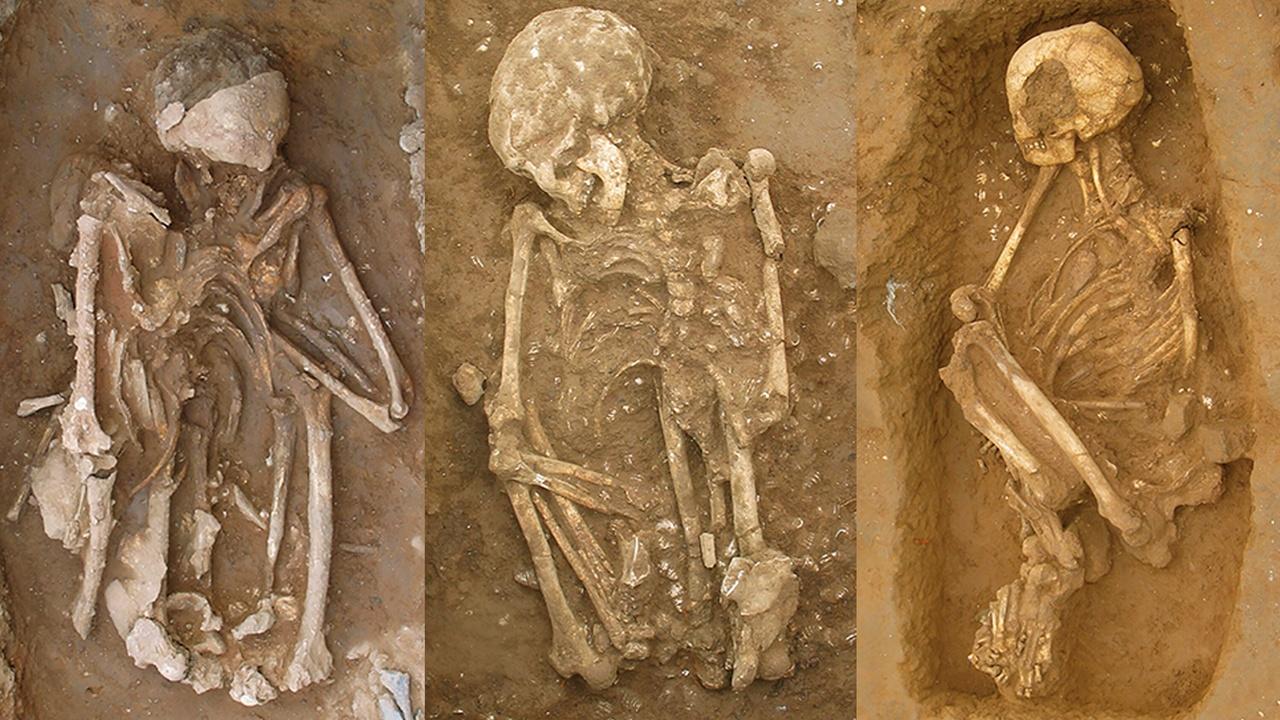

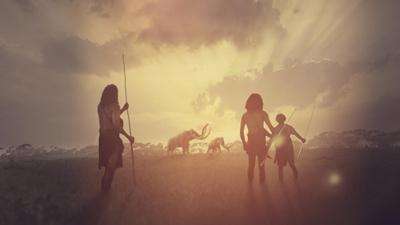


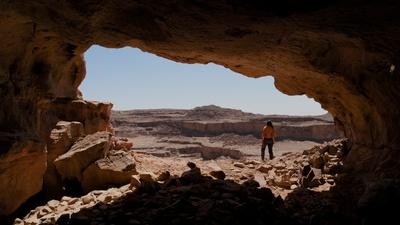


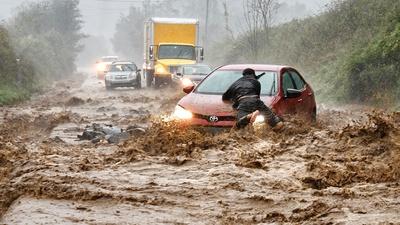

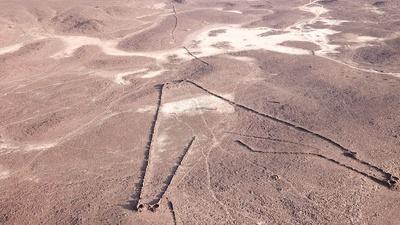





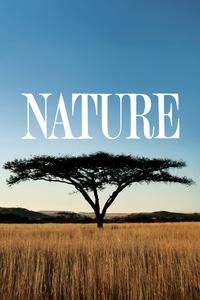






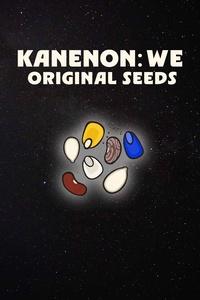





![American Masters | Marlee Matlin: Not Alone Anymore [ASL]](https://image.pbs.org/contentchannels/4/DQonQiQxfoWZiaPvAsVCw.jpg.resize.200x300.jpg)
